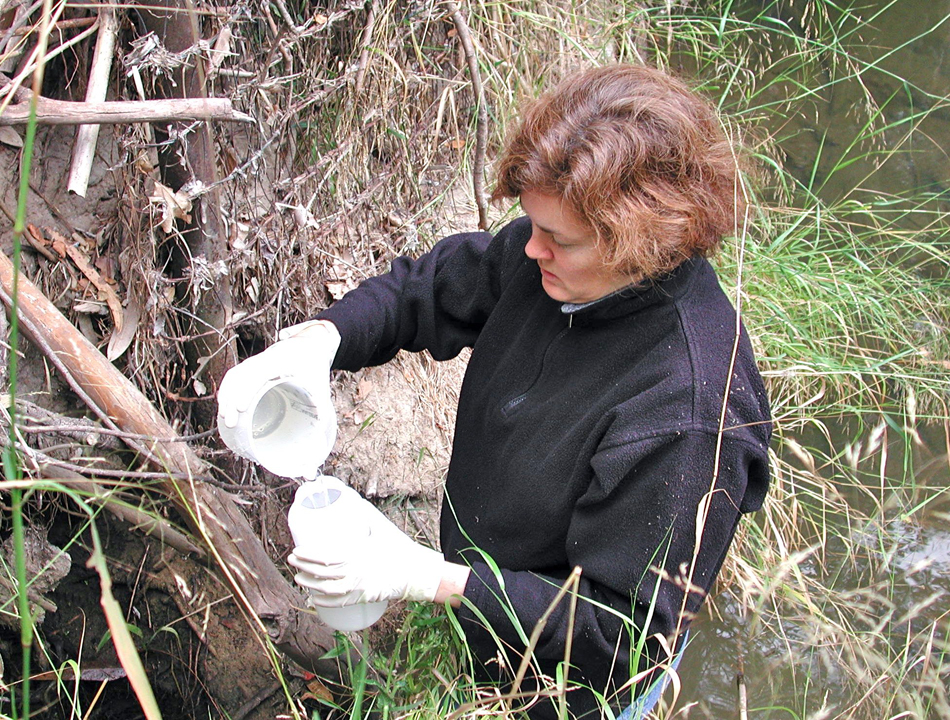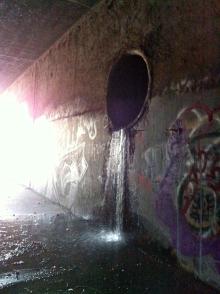
New UC Santa Barbara-Based Project to Study Contaminants in Urban Water Environment

What contaminants lurk in the urban subsurface, and what happens to them once they're there? Do they make their way into storm drains and creeks to reach groundwater, or even oceans? Or do they naturally attenuate as they migrate through soils, somehow allowing them to self-cleanse as they travel? A UC Santa Barbara researcher hopes to find out, thanks to a generous new gift to fund her work.
Longtime water industry executive Henry H. Wheeler, Jr. has awarded $1.25 million to the Bren School of Environment Science & Management for Professor Patricia Holden's new initiative, "Urban Water Environment," a research and training program on urban water quality. The dual-thrust endeavor looks to identify and quantify threats to surface waters and groundwater in urban environments –– and determine how to mitigate them.
"Henry Wheeler's strategic and visionary philanthropy will make a meaningful difference in addressing local and global water quality issues; I am honored to thank him for his leadership and generosity in supporting this critical initiative on water contaminant processes and management," said Chancellor Henry T. Yang. "We are extremely proud of Professor Holden's accomplishments and continuing research efforts on microbial ecology and engineered nanoparticles in the vadose zone."
"This is a generous gift by someone who understands water inside and out, and how important research can be in creating solutions to water quality threats," Holden said of Wheeler. "He understands that this is the way we live now, in urban environments. It's not just about the pipes underneath our roads and buildings. It really is all one system. We have potable water to drink and shower with, but we generate waste streams that can then threaten the very resource that cities depend upon –– ongoing sources of clean water. Rainfall running off polluted surfaces becomes a sort of waste stream. Industries and businesses store and spill contaminants underground. How are we managing those water pollution sources in ways that protect the entire urban water environment?"
Wheeler, whose family founded the Park Water Company in Downey, Calif., approached Holden after reading her earlier research, which employed DNA and dye tracer techniques to reveal the presence of human waste in creeks and storm drains, indicating underground sewer leakages.
"Coming from the water business, I know how we worry about underground infrastructure," Wheeler said. "People tend to take it for granted. They think it's down there and it's OK, but it's not. Leaking sewer pipes are a huge problem, and it's not just a local problem; it's ubiquitous."
"We need to know if water is a factor in disease or not, and if it is, we need to remediate it," he added. "That requires good science, and Dr. Holden and the Bren School are up to the task. I wanted to support her and her team, because they're the boots on the ground in those efforts."
When her new project gets under way later this summer, Santa Barbara itself will serve as a lab for sampling, coring, and analysis that Holden said could ultimately illuminate issues plaguing cities around the world. If resulting insights and possible remedies can one day inform or be replicated in other locations, her work will hold potential implications for public and environmental health on a broader scale.
"Groundwater might not be Santa Barbara's normal source of drinking water, but under drought conditions it absolutely can be," said Holden. "There are major cities –– Tokyo, for example –– where they've shown pharmaceuticals entering groundwater. So to the extent that this project is meant to be a window into a general problem, we are concerned about the outcomes on behalf of Santa Barbara, yes, but we're also thinking about how it can provide insight into the broader problem."
The vast array of potential pollutants in the shallow urban subsurface –– Holden refers to such things, collectively, as being "like a soup" –– runs the gamut from pathogens to pharmaceuticals, from the ingredients in our shampoos to the hormones we take and excrete, to the pills we dump down the drain, and industrial solvents, and gasoline. Various pollutants from various sources can commingle, and co-migrate. What happens next is largely unknown –– and that's what Holden hopes to discern.
"We don't know how fast the soup changes or in what ways," she explained. "It may be that it completely self-cleanses through the soil by the time it reaches groundwater. It may be that it doesn't. But in the absence of replacing leaking pipes and excavating or pumping away all industrial pollution, which isn't going to happen, we need to know what's going on and how to make the preferred outcomes ––processes that could obliterate the soup, many of which are naturally occurring –– happen better and faster."
"I'm hoping that we can learn enough about the rate and extent of natural attenuation processes to discover passive, or minimally engineered, solutions," Holden added. For instance, there may be cost effective ways to manipulate subsurface soils –– which, she said, are teeming with microorganisms that can destroy all sorts of pollutants –– versus the more expensive approach of "pumping things out and treating them."
With the ultimate goal of informing and influencing how groundwater is protected in the future, Holden said the ideal outcomes would be ones that are affordable and simple.
"We hope to find situations where, as pollutants migrate from beneath the pavement or infiltration basins (as in the case of low-impact development options for stormwater) downward to groundwater, there's enough natural attenuation that the contamination never actually reaches groundwater," she explained.
"Then, if we can understand how to make this happen in a variety of field situations, we've got something that's really important for communities to know. To discover that one could count on such processes, and maybe give cities tools to confirm that, could be so valuable."
Related Links



